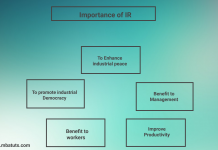Disinvestment in Business Environment
Disinvestment means reducing the stake by the owner by the way of offering this stake to the general public or institution. The government of India initiated its investment in various industries in 1950 & carried out this till 1991.
The government was investing massive amounts every year in these industries such as steel, coal, mines, hotels, etc. In this 40 years span, most of these companies incurred losses. The reasons for this are plenty it was 1991 when the government felt that it must withdraw the investment from these companies & and allow private people to function with professional skill and the fund could be raised by disinvesting these companies.
Types of Disinvestment
Disinvestment of a minority stake in PSUs can be done in the following ways:
- Initial Public Offering (IPO): an offer of shares by an unlisted PSU to the public for the first time.
- Follow-on Public Offering (FPO): Further Public Offering is an offer of shares by a listed PSU.
- Offer for sale (OFS): shares of a PSU are auctioned on the platform provided by the stock exchange. This model has been used extensively by the government since 2012.
- Institutional Placement Programme (IPP): under this, only selected financial institutions are allowed to participate and the government stake is offered to only such institutions. E.g., mutual funds, insurance, and pension funds such as LIC, etc.
- CPSE Exchange Traded Fund (ETF): Through this route, the government can divest its stake in various PSUs across diverse sectors through a single offering. This mechanism allows the government to monetize its shareholding in those PSUs which form part of the ETF basket.
- Cross-holdings: in this method, one listed PSU takes up the government stake in another listed PSU.















